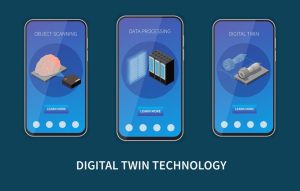People cut down almost 15 billion trees annually, and they plant 9 billion trees in return. This means that 6 billion trees are lost every year. Putting in trees by hand takes a long time and costs a lot of money. To keep up with tractors and bulldozers that large clear areas of land, people need to find a large-scale solution, like using a drone to plant nearly 100,000 trees daily.
Using drones to plant mangroves
In Myanmar, people living in the Irrawaddy River delta have planted more than 2.7 million mangrove trees over the past 5 years. They did this to try to start restoring an ecosystem that had been disappearing for decades.
The local non-profits that oversee this work want to cover a much larger area, so they use drones to plant trees. A leading UK-based start-up makes these drones. They can plant as many as 100,000 trees in a single day, leaving the local neighborhood to take care of the trees that have already started to grow.
Currently, the company that makes drones has worked with locals to plant trees on 750 hectares of land, which is about twice the size of Prospect Park. By planting a million more trees, these drones will help cover another 250 hectares of land. The non-profit group wants drones to plant a billion trees over a much larger area.
Process of Tree Planting by Drones
Drones are used to plant trees, and the process happens in stages.
- In the first step, the mapping drones usually fly more than 300 feet above the ground and collect detailed information about the land’s shape and the quality of its soil. An algorithm uses this information to pick the best places to plant trees and the best kinds of plants grown.
- In the next step, a group of low-flying drones will automatically follow a map to plant seeds in “seed pods” filled with nutrients and made for each plant species by plant scientists. Each drone gets to carry a mix of plants from different species simultaneously. Then, these drones quickly fire these pods into the ground to make holes.
- The process starts with picking spots a few centimeters apart to plant seeds. A drone with germinated seeds can plant almost 100,000 seeds in a day. When 60 of these drones work together, they can plant a billion trees in one year. The drones are ten times more efficient than people planting trees with their bare hands.
Difference Between Aerial and Drone Plantations
Plantation by drones is very different from a plantation in the air. In the case of aerial planting, there is a chance that the seeds will land on a rock or in a swamp and won’t grow. With drone plantation innovation, on the other hand, the chances of success and seed survival are much higher because the seeds only grow in the spots that have been pre-mapped.
Is a technology that uses drones the best option?
Experts think that planting trees may not be the only important thing. They say that protecting forests from overgrazing, farming, and forest fires also helps them grow back naturally. Some experts worry about the efficiency of drone reforestation because it could make countries less likely to try to save their existing forests.
Also, when it comes to traditional reforestation projects, plantation work can give people in need a job. By using drones to plant trees, jobs may become less likely as robots take over the work people used to do to save the Earth.
Using drones to fix up the environment is still up for discussion. In the short term, it might be easier to use drones to plant trees instead of fixing ground problems, but the problems need to be fixed in the long run.
Experts agree that drones can be a good way to make accurate maps of large land areas and measure the growth of trees and plants. On either hand, scientists aren’t sure how well drones will work as a way to plant trees to stop deforestation on a larger scale.
How technology helps find trees being cut down
A leading data science company has been employing transfer learning with Convolutional Neural Networks to predict the species of plants and trees by looking at close to 6.8 lakh images and getting an accuracy of nearly 85%.
This model was turned into a scalable web service that lets users upload images and sort them by species in real-time. This distributed database has made it possible to use the same model on the whole fetched dataset, reducing the time it takes from weeks to just a few minutes.
A non-profit group is making acoustic monitoring systems to stop illegal logging. The people who work for this organization put used cell phones inside the rainforests in a way that sends instant alerts whenever a chainsaw is heard nearby.
Much information is also shared about the ecosystem, which helps talk about how to protect the areas that are most at risk. A time-series analysis of annual forest loss before, all through, and after building the highway that helps connect Cameroon and Nigeria was done to help an African organization.
Big Data helped map how much tree cover was lost each year from 2001 to 2014. This helped them figure out why trees were being cut down close to the highway, logging was happening, and the forest was being turned into farmland. This helps the experts learn more about how infrastructure and transportation projects affect the area.



